Ford Mustang (1999-2004) Service Manual: Shift Patterns
Upshifts
Transmission upshifting is controlled by the powertrain control module (PCM). The PCM receives inputs from various engine or vehicle sensors and driver demands to control shift scheduling, shift feel and torque converter clutch (TCC) operation.
Downshifts
Under certain conditions the transmission will downshift automatically to a lower gear range (without moving the gearshift lever). There are three categories of automatic downshifts; Coastdown, Torque Demand and Forced or Kickdown shifts.
Coastdown
The coastdown downshift occurs when the vehicle is coasting down to a stop.
Torque Demand
The torque demand downshift occurs (automatically) during part throttle acceleration when the demand for torque is greater than the engine can provide at that gear ratio. If applied, the transmission will disengage the TCC to provide added acceleration.
Kickdown
For maximum acceleration, the driver can force a downshift by pressing the accelerator pedal to the floor. A forced downshift into a lower gear is possible below calibrated speeds. Specifications for downshift speeds are subject to variations due to tire size, engine and transmission calibration requirements.
Disassembled Views
4R70W Automatic Transmission - Disassembled View
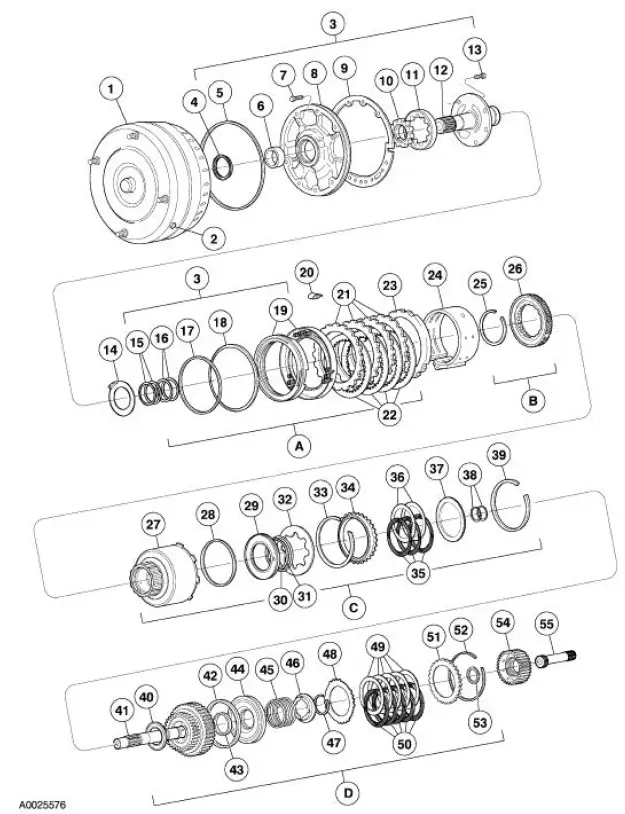
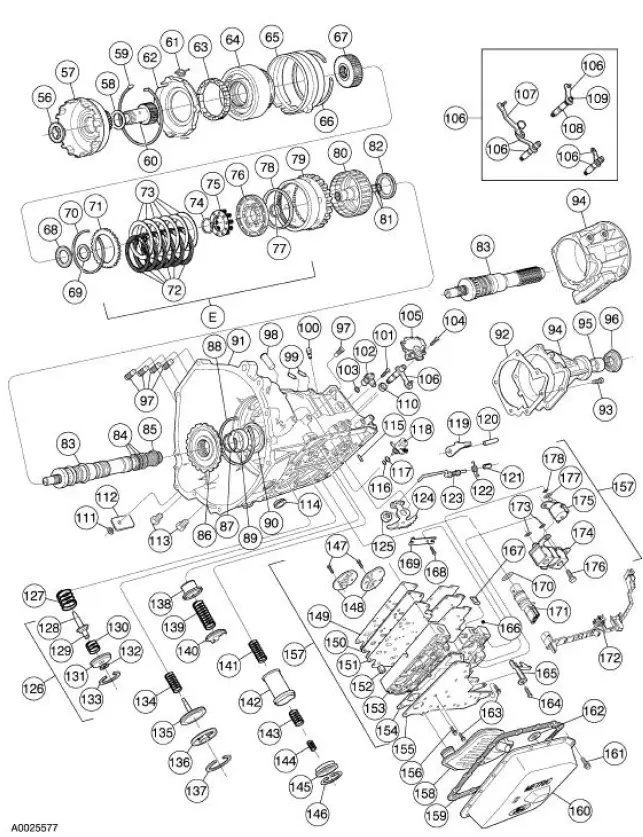
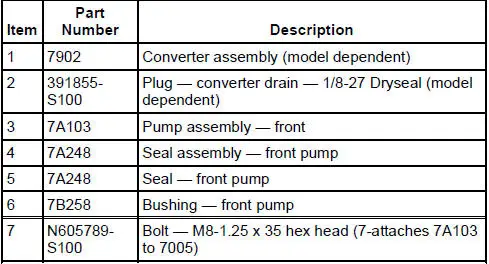
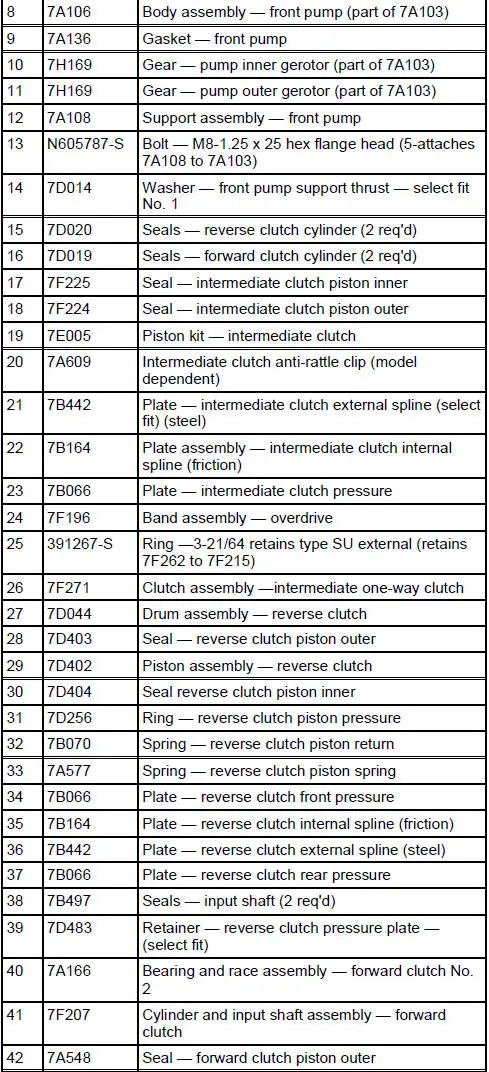
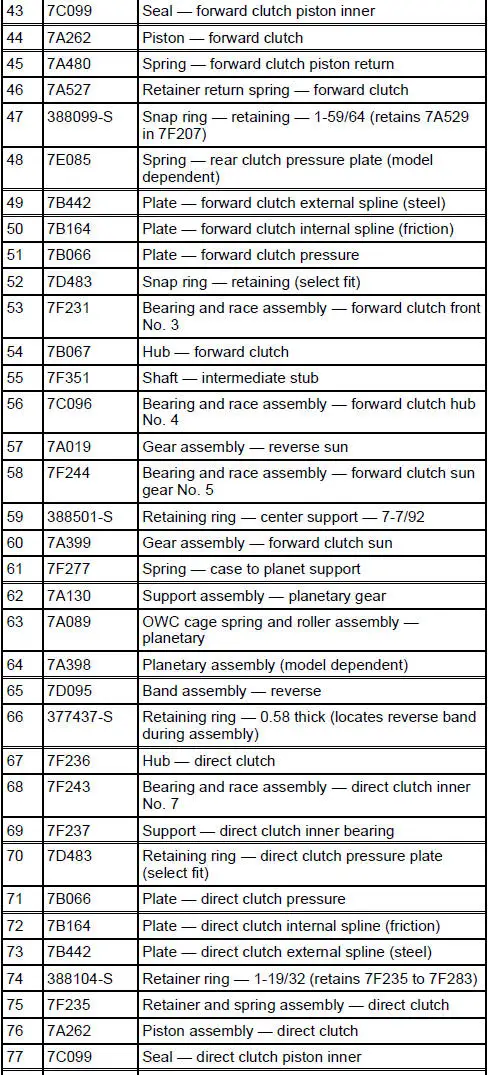
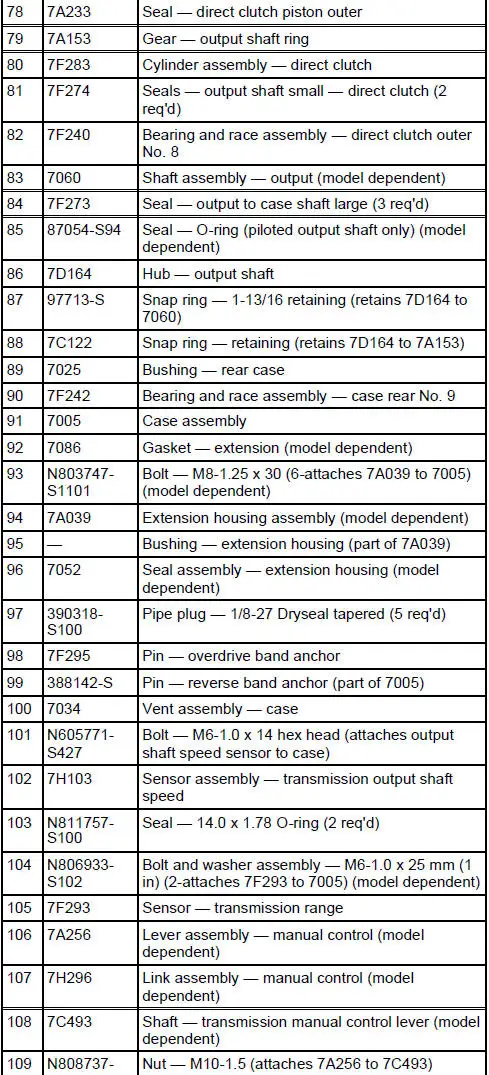
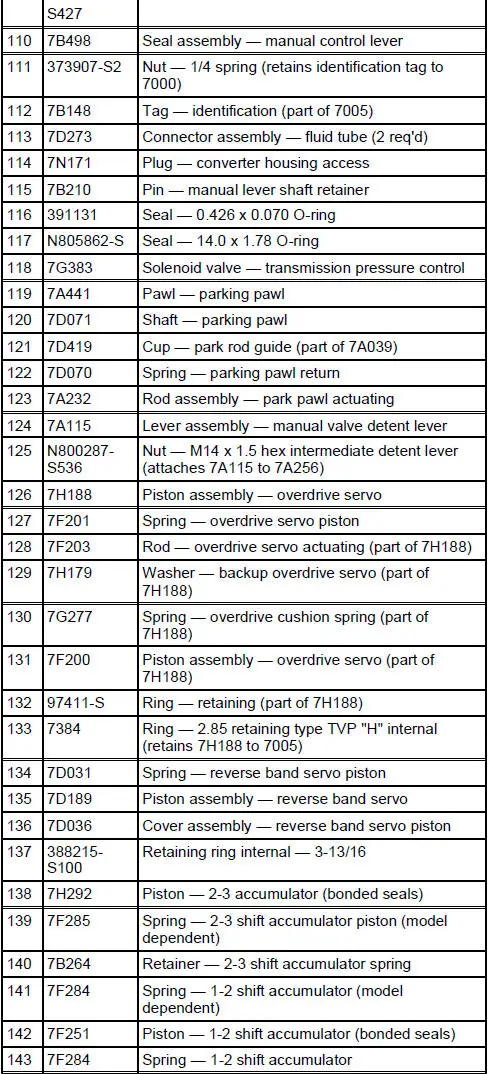
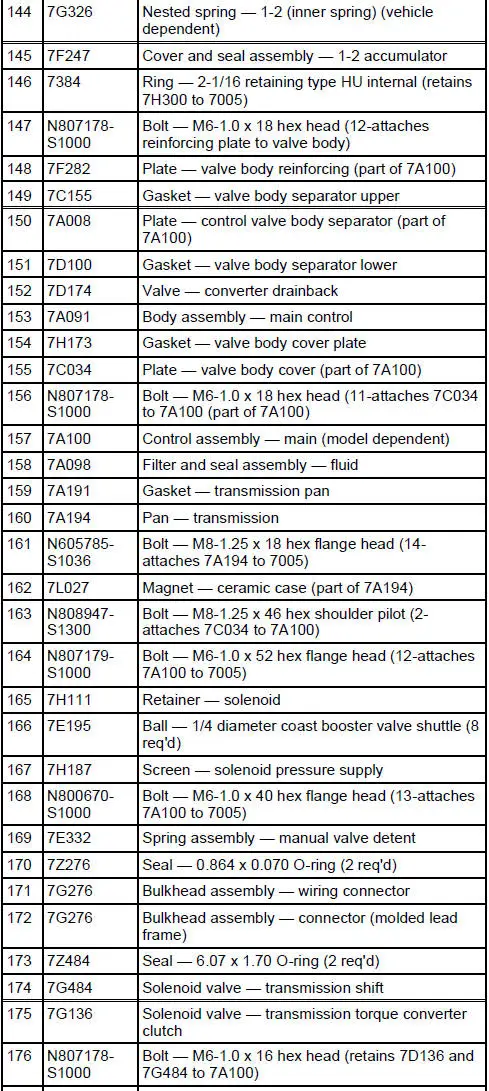
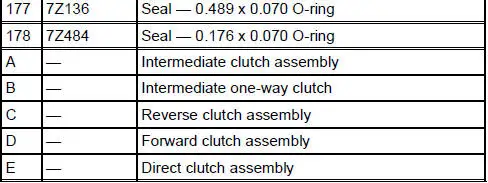
Bushings, Bearing and Thrust Washer Locator
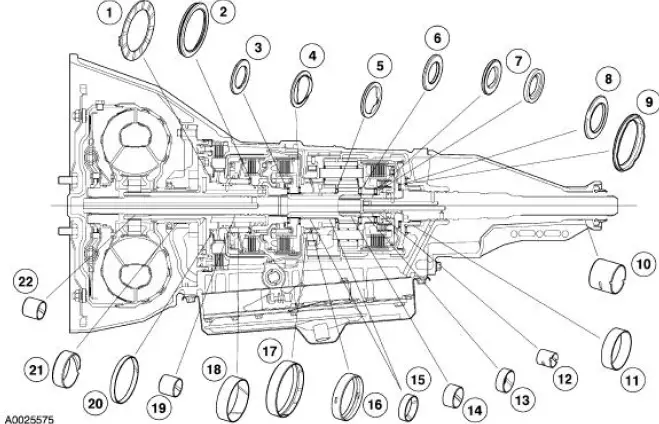
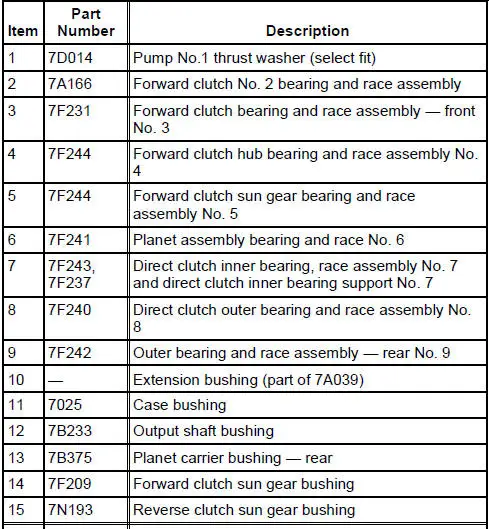
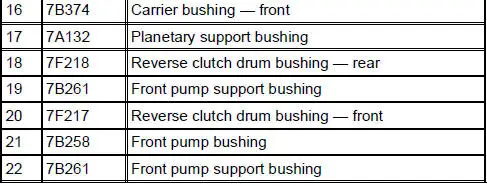
Seals, Rings and Gasket Locator
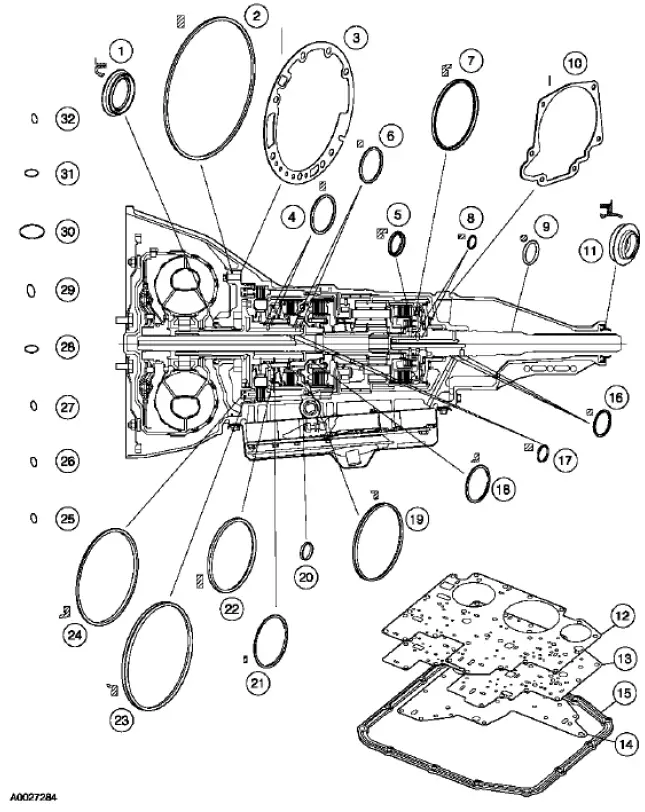

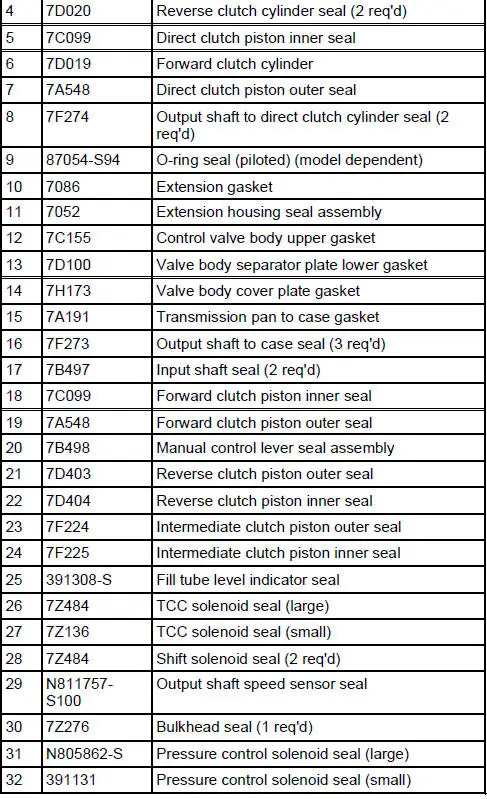
Main Components and Functions
Transmission Main Components - Sectional View
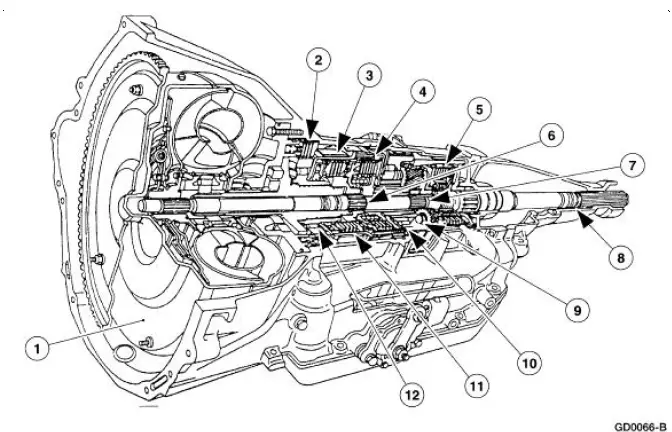
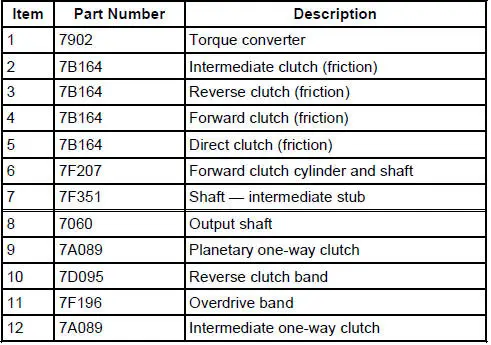
 Range Selection
Range Selection
The transmission has six range positions: P, R, N, (D), 2 and 1.
Park
In the PARK position:
there is no powerflow through the transmission.
the parking pawl locks the output shaft to the ...
 Torque Converter (Description and Operation)
Torque Converter (Description and Operation)
The torque converter transmits and multiplies torque. The torque
converter is a four-element device:
impeller assembly
turbine assembly
reactor assembly
clutch and damper assembly
...
Other materials:
Pinpoint Tests
CAUTION: Before removing and installing the generic electronic
module (GEM) or its
connectors, disconnect the battery. Failure to follow this caution will
result in the GEM storing
many erroneous DTCs, and it may exhibit erratic operation after
in ...
Towing the vehicle on four whe
Emergency Towing
If your vehicle becomes inoperable (without access to wheel dollies,
car-hauling trailer, or flatbed transport vehicle), it can be flat-towed
(all wheels on the ground, regardless of the powertrain and transmission
configuration) under the fol ...
Engine (Assembly)
Special Tool(s)
Guides, Connecting Rod
303-442 (T93P-6136-A)
Installer, Crankshaft Vibration
Damper
303-102 (T74P-6316-B)
Installer, Front Cover Oil Seal
303-335 (T88T-6701-A)
Installer, Crankshaft Rear ...
